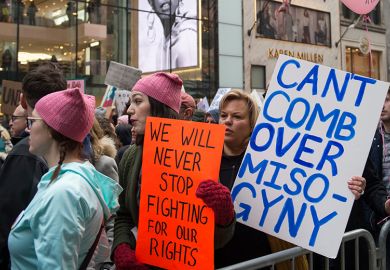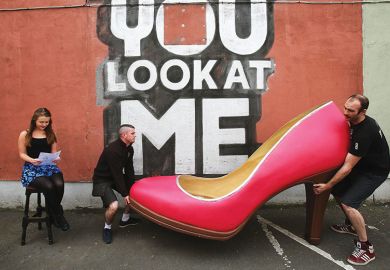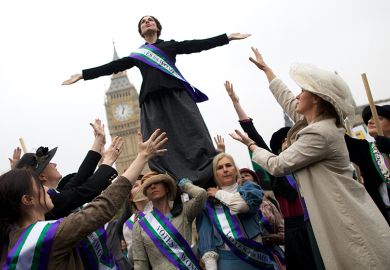The title of this book promises much: uncanny domesticity, hauntings and “occupied” houses (houses that are perhaps a little too full). Pointing to the appearance of a guest or intruder, or the hovering presence of servants, Emma Liggins evokes questions about “hospitality” and belonging. Who really belongs in these houses? When does a house become unhomely (unheimlich) or uncanny in the Freudian sense? What happens when the place where we are meant to feel safest shifts, slides and becomes threatening? Liggins explores these ideas in the work of six women writers: Elizabeth Gaskell, Margaret Oliphant, Vernon Lee, Edith Wharton, May Sinclair and Elizabeth Bowen.
In the introduction, she claims that the haunted house “transforms domestic space into a place of terror that threatens marital relations and women’s lives and sanity”. She has already written a book about women who were unmarried or did not “fit”, Odd Women? Spinsters, Lesbians and Widows in British Women’s Fiction, 1850s-1930s (2014), and this one continues her exploration of women’s place.
The female ghost story has long been seen as a way to criticise the patriarchy and particularly the misogynistic family structures and spaces that imprison women. Liggins convincingly maps the haunted house narrative on to the nascent feminist movement and the changing status of women, beginning in the 1850s with the vexed “woman question”. Supernatural interference, she writes, “becomes a way in which to expose and challenge the Victorian reification of the home, at a time when women’s occupation of domestic space was seen as fundamental”.
She also demonstrates that a levelling process is often present in ghost stories. Narrators/ghost seers can be servants or mistresses, ladies or drudges. The ghosts themselves transcend class and gender boundaries, too, as well as spatial ones: ghost servants, for example, will not “stay in their place”. As Liggins comments: “Despite Victorian ideals of privacy, the permeability of boundaries allowed the phantoms to get through doors or across thresholds.”
The book focuses on the short story – ever the staple for ghost fiction. Short ghost stories, by necessity, do not give the full picture and this can be a technique that disquiets and disorientates the reader. Liggins argues (as have others before her) that the ghost story can be a subversive form of literature which brings “invisible women” to the fore, but she goes further than other critics in her application of spatial theory to the haunted domestic space. Providing what she calls “a genealogy of the haunted house narrative”, she looks at the changes in representations of place, from the manor house to the suburban villa; space (architecture, gardens, closed doors and locked rooms); and technology, such as electricity and telegraphy. Moving from the Victorian period to the modern and past two world wars, the haunted houses get smaller and more claustrophobic. At the same time, technology advances and becomes uncanny.
Rather than just examining the English ghost story, Liggins ranges across Europe and to America, producing a deeply satisfying book that offers important commentaries on this period of history and vital and unexpected observations about women’s place in the haunted home.
Ruth Heholt is senior lecturer in English at Falmouth University. Her most recent book is Catherine Crowe: Gender, Genre, and Radical Politics (2020).
The Haunted House in Women’s Ghost Stories: Gender, Space and Modernity, 1850-1945
By Emma Liggins
Palgrave Macmillan, 324pp, £69.99
ISBN 9783030407513
Published 1 July 2020
Register to continue
Why register?
- Registration is free and only takes a moment
- Once registered, you can read 3 articles a month
- Sign up for our newsletter
Subscribe
Or subscribe for unlimited access to:
- Unlimited access to news, views, insights & reviews
- Digital editions
- Digital access to THE’s university and college rankings analysis
Already registered or a current subscriber?








